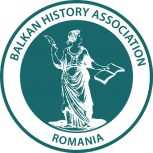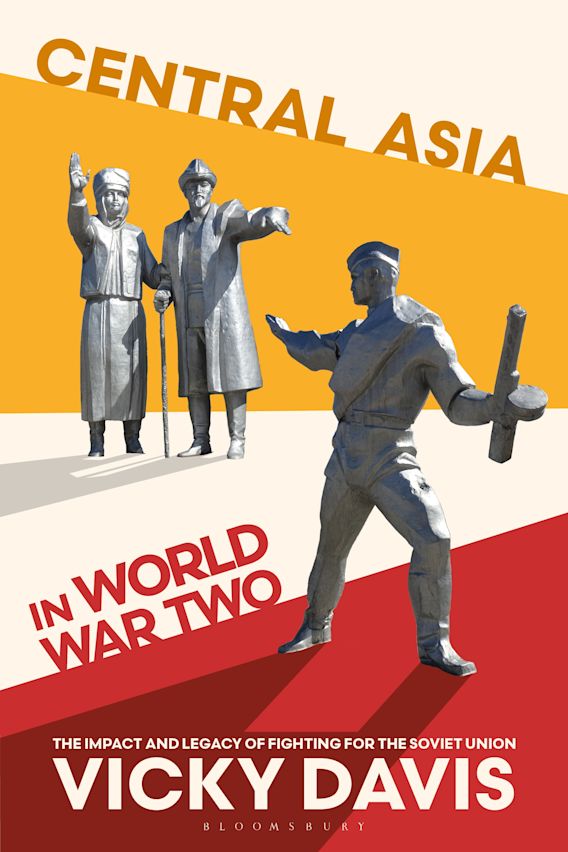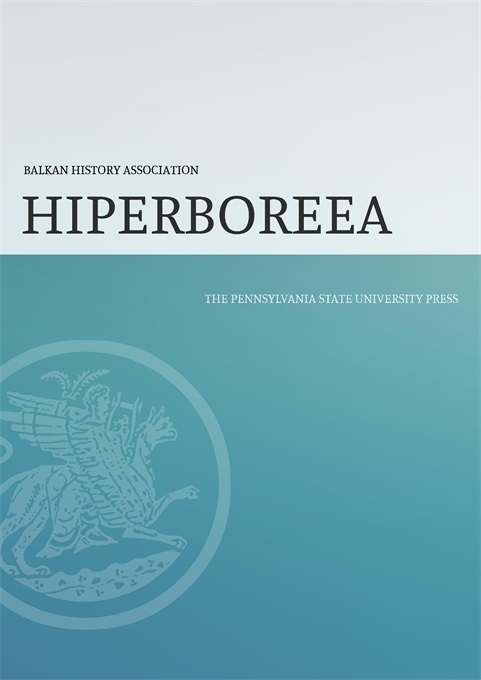“Surprisingly little is known in the West about the role of Central Asia in the Second World War. The region as a whole has been largely overlooked by historians, who have tended, if anything, to concentrate on its centuries-old position at the hub of the ancient Silk Road”(p. 6). It is a paradox that there are so many gaps in our knowledge of the course of World War II, yet the outcome of this greatest conflict of the past century continued to influence the shape of the international system for decades to come into the modern era. At least one of these gaps has been filled by Vicky Davis’ Central Asia in World War Two: The Impact and Legacy of Fighting for the Soviet Union, a brilliant account of the war’s impact on the inhabitants of a region seemingly separated by thousands of miles from the frontlines of the Russian-German conflict.
Putting into question the distance separating Central Asia from the main theater of the war is justified if we consider that the area of the five republics comprising this region stretches from the Chinese and Afghanistan border in the southeast to the foothills of the Urals and the Volga basin in the northwest. Thus at least during the Battle of Stalingrad, the residents of the western part of the Kazakh SSR directly experienced the proximity of the front and the fierceness of German attacks aimed at disorganizing the Soviet logistics support and hampering the city’s defense: “Only 500 kilometres separated Stalingrad from western Kazakhstan, which came increasingly under threat from German bombers during 1942, bringing the war much closer to home for some”(p. 45). On the other hand, their compatriots from distant villages at the foot of the Tian Shan Mountains, which separate the USSR from China, struggled to obtain any news from the front, as information was not only delayed but also put through the filter of Soviet propaganda.
If these communities had anything in common, it was certainly the shared fate of being the base for the frontline military operations: making Herculean efforts to mobilize manpower and infrastructure to support the fighting army, hosting the masses of people displaced from the European part of the USSR, and re-launching factories evacuated from war-stricken areas. They were also united by being the peripheries, where the colonial attitude of Russians to the indigenous population, derogatorily called “inorodtsy” (lit. “those of different descent”) by no means disappeared after the October Revolution despite lofty claims of the Bolsheviks, and where the forced modernization, implemented by the Soviet authorities already in the 1920s and 1930s, gained new forms of expression and fresh dynamics: “The population was far more exposed to Soviet ideals than ever before, broadcast by the mass media and epitomized by the Russian language and culture imported by evacuees” (p. 7).
Vicky Davis opens a new chapter in research on World War II behind the frontlines of the Red Army, drawing an apt conclusion on the universality of the war experiences of Central Asia’s inhabitants: “In many ways, though, the experience of Soviet Central Asia was representative of much that happened in the Second World War across all the non-occupied regions of the Soviet Union. With the increased state exploitation of its resources, Central Asia had much in common with Siberia and the Urals”(p. 6).The novel elements of her approach include elements such as specific personal stories from the lives of people who resided in Central Asia from 1941-1945 that illustrate each phenomenon analyzed, among others. Hundreds of people whose wartime adventures the author collected during the four years of working on the book bring into the narrative an element most important in historiography – the translation of key historical moments into the lives of individuals, not just the evolution of political organisms: “It is an analysis of a worldwide conflict as it affected these ordinary citizens of Central Asia on a day-to-day, individual scale”(p. 8). The wartime fates of individuals and entire families that Davis describes reveal also that the notion of a safe existence far away from the frontline was merely an illusion.
Naturally, the conscripted men also had their share of extreme wartime experiences presented in the book. After covering the distances they could hardly imagine before, they usually reached the frontline not only without basic physical training or technological and logistics skills but even without a rudimentary language course: “These naïve young men with little schooling were at first poorly equipped to fight a modern war, barely understood orders shouted or written in Russian and were completely out of their depth living and fighting amongst men from a totally different culture, who often regarded them as outsiders”(p. 42).As they faced the frightening, brutal conflict foreign to them (also with regard to language) and the poorly masked stereotypes about the “wild” inhabitants of Central Asia widespread in the Soviet army, those soldiers became characteristically withdrawn in relations to their Slavic military “comrades”: “Central Asians tended to be quieter and more gentle than Russian troops, keeping themselves to themselves in small ethnic and linguistic cliques. They were distinctly demoralized by the harsh weather conditions at the front, while their poor Russian prevented integration and led to accusations of backwardness – deficiencies for which they were definitely not to blame”(p. 65).
However, the adventures at the front and examples of military heroism, so beloved by the authors of Soviet coursebooks, are not Davis’ main narrative. The overview of military operations in which Kyrgyz, Kazakh and Uzbek soldiers participated is limited to the first of the four parts of the book, while its core are the traumatic experiences of those who stayed behind: families deprived of their main provider; women and children taking up work beyond their strength under pressure of the state apparatus and to the beat of patriotic propaganda; overcrowded towns, facing the subsequent waves of evacuees; distant provinces where forcibly deported communities of “enemies of the state” arrived unexpectedly. The monograph presents a picture of Central Asia fully caught up in the gears of war and bearing its costs while lacking reliable information on how the conflict was unfolding: “As the news from the west became unbearable, very little was published, with much of the front page devoted to provincial reports in the early months of 1942. Very few editions were published in 1942 – either due to the serious shortage of paper, or because the state wished to prevent readers from discovering the true progress of the war and the military failures of the Red Army”(p. 188).
Vicky Davis points to a number of problems generated by the war that so far have not been sufficiently recognized in historiography. She highlights the role of women, both those fighting on the front lines and those bearing the burden of new duties in the absence of their fathers, husbands, and sons. She describes numerous cases of anti-Semitism, of open resentment against the Jews, coming from the west in fear of the Nazi policy of extermination. She also presents the fates of nations punished for collaboration with Germans and deported to Central Asia, not hesitating to use the strongest words: “The Stalin regime’s campaign of wholesale ethnic cleansing at various stages in the war was no doubt genocidal in character”(p. 307).
The adopted strategy of zooming in on individuals and their personal experiences of the Great Patriotic War does not prevent the author from noticing the most significant social results of the conflict, which are not necessarily negative. Davis repeatedly emphasizes that the four years of war did more for integrating the inhabitants of the region with the rest of the country and for social modernization of the Central Asian republics than the preceding two decades of Soviet rule.
The accelerated learning of the Russian language in wartime conditions; the raised level of technological knowledge through work in the factories evacuated to Tashkent and Alma-ata; the direct contact with Russian culture and its representatives; finally, the sudden and externally enforced change in the social role of women – all this laid the foundations for the region’s new self-image of itself after 1945: “Having experienced the army and the Slavic culture imported with the evacuees, the population of Central Asia became more cosmopolitan in outlook, encouraged by a higher standard of education and supported by an ongoing campaign of modernization offering more opportunities. By the end of the Second World War the population of Central Asia was better integrated into Soviet society”(p. 212).
The analysis of modernization through war, both in its unintended and government-planned aspect, places Vicky Davis among such authors as David L. Hoffmann, Sheila Fitzpatrick, and Natalya Chernyshova, who established the motif of multi-aspect, top-down social modernization and its impact on the lives of individuals and societies, without including in descriptions and evaluations of the past element of ideologization, so characteristic of Soviet authors.
While Davis’ work is based on archival materials dating back to the 1940s, it is surprisingly current. The author extrapolates the description of mass movements of people evacuated and deported to Central Asia to the symbolic heritage of the entire region that has been a witness of continuous migrations, both natural and forced: “Mobility has once again become the norm, as many ethnic Russians left Central Asia upon the disintegration of the Soviet Union in 1991. Following them westwards, thousands of indigenous Central Asians became voluntary economic migrants, travelling to Moscow in search of work. (…) It has been followed, however, by a noticeable exodus of Russian citizens into Kazakhstan, Kyrgyzstan and Uzbekistan, driven by the wish to escape the ramifications of the Russian invasion of Ukraine in 2022, as the republics of Central Asia continue to offer sanctuary to those fleeing war” (p. 308).
There are further comparisons with today’s Russian-Ukrainian war that come to mind when reading Davis’ book. One such connection between past and present is the depiction of Moscow’s actions, the images of national minorities and prisoners forcibly conscripted and then used as a primary blunt strike force, sent into pointless combat at the frontlines: “Many men and women died a hero’s death. Too many others, though, were deemed to be fit only for cannon fodder”(p. 59).
Lastly, Davis’ work is a testimony to the difficulties encountered during historical research in the post-Soviet area, unwilling to reveal to a foreigner its memory of traumatic past and often hiding the Soviet heritage behind the official stance of the authorities of a given republic. Kyrgyzstan, where Davis collected particularly large number of accounts, is by no means a statistical fluke: “If much of this work focuses on Kyrgyzstan, it is thanks to the wealth of historical material hidden in the Issyk-Kul’ archives: pure gold, in fact! Drawing on these previously undiscovered archival documents, this work reveals the true impact of war in Central Asia”(p. 11). After three decades of shifting transformation directions and ineffective experiments with democracy, this republic undoubtedly still is the door left ajar, enabling researchers to understand the problems of the inhabitants of Central Asia, building their post-Soviet reality.
Michał Kuryłowicz, PhD, Institute of Russian and East European Studies, Jagiellonian University, Krakow



